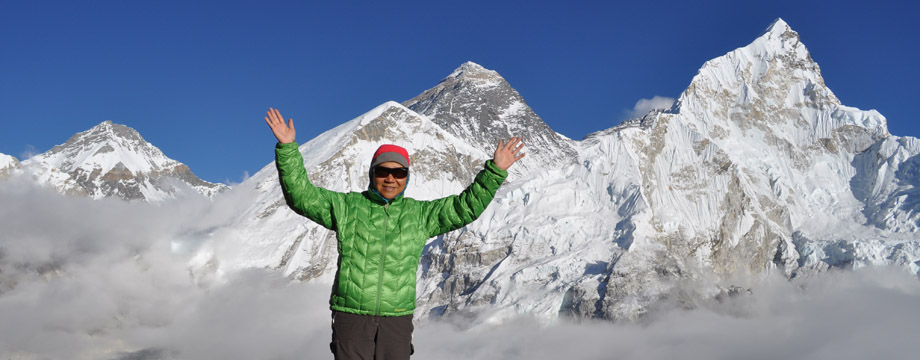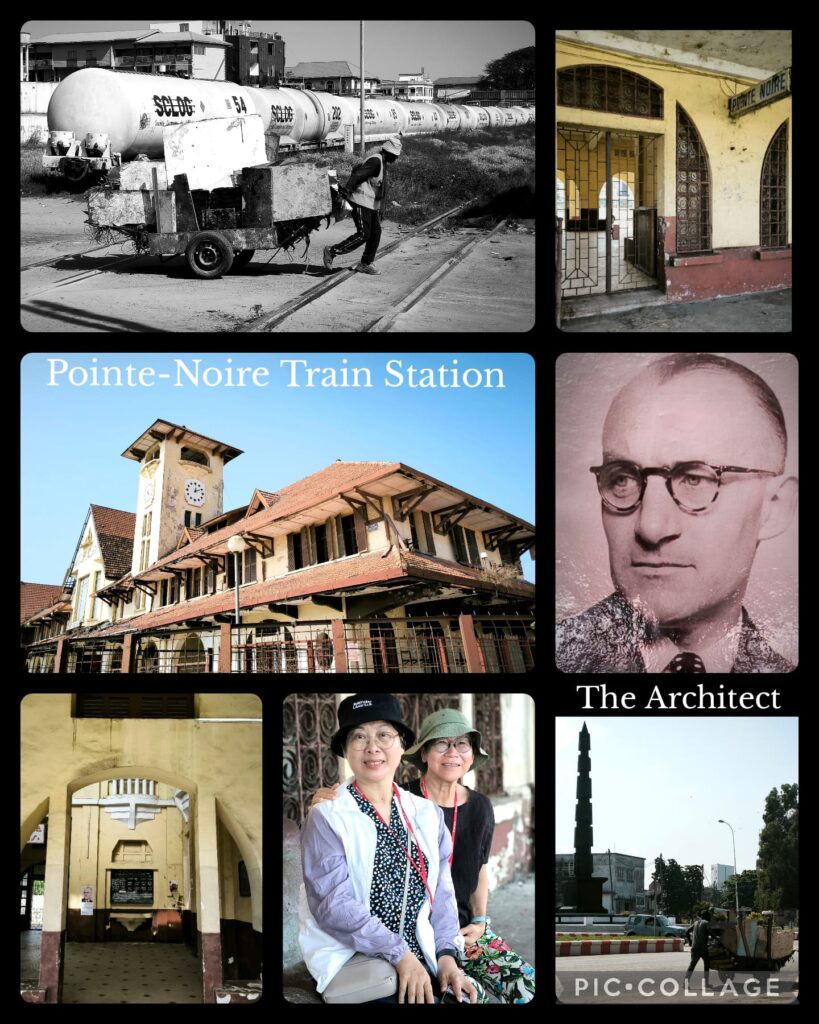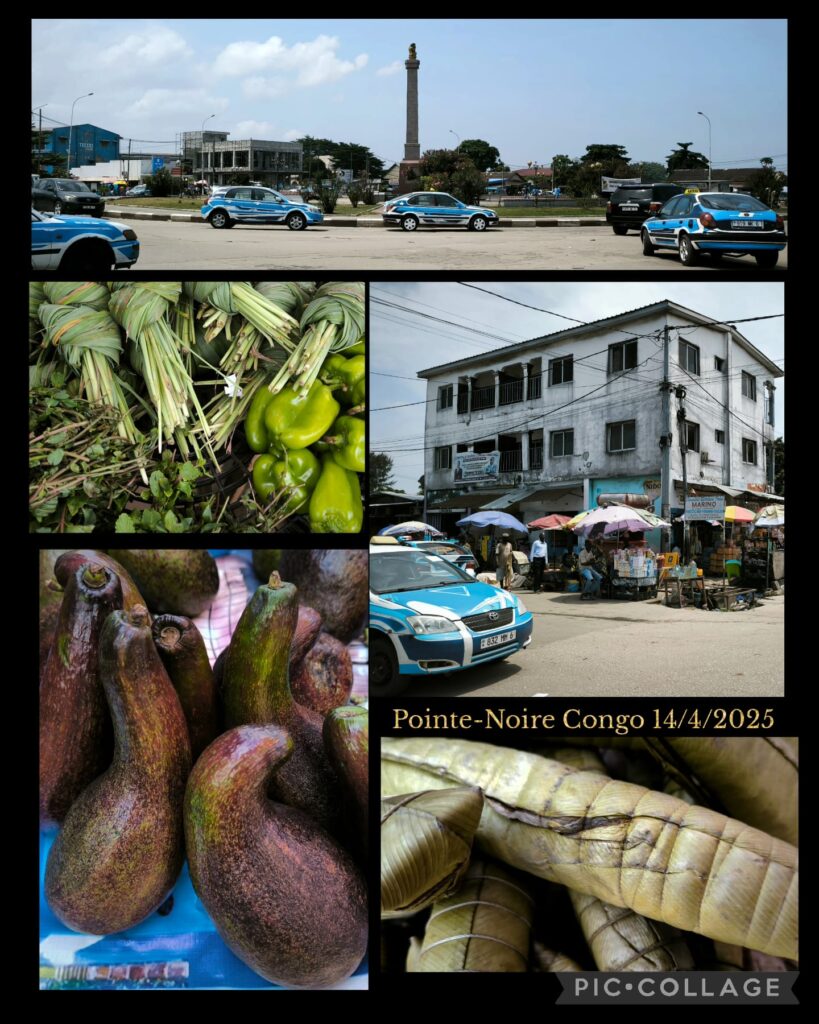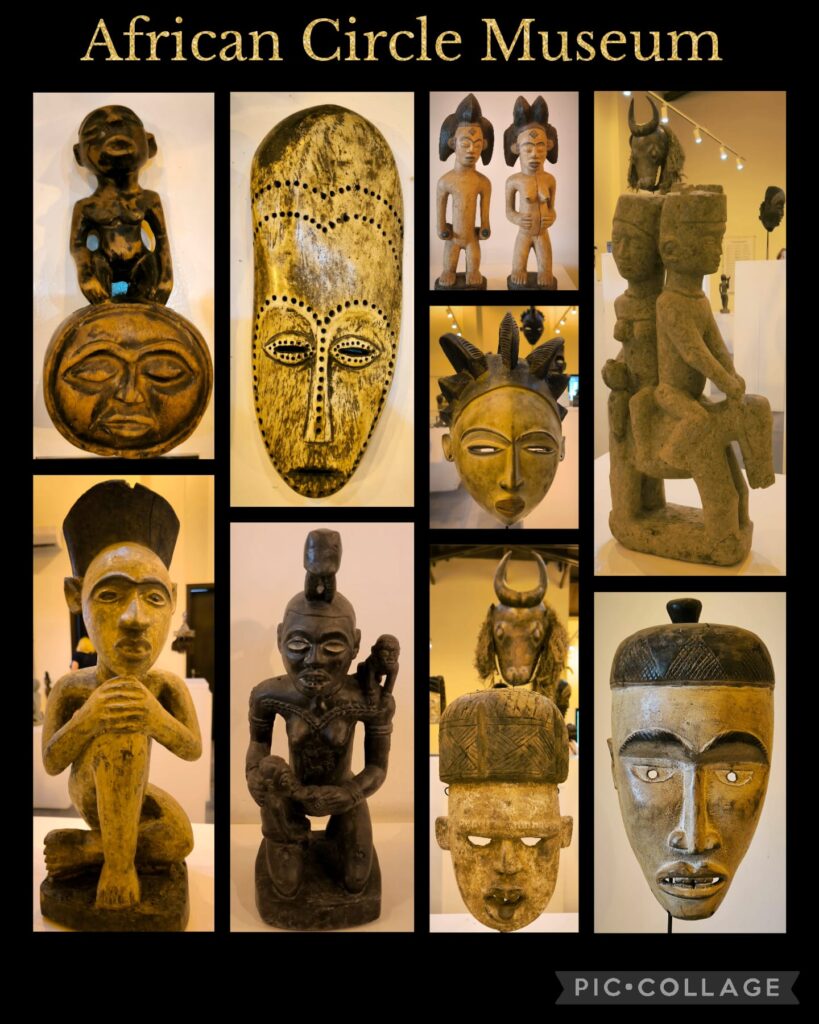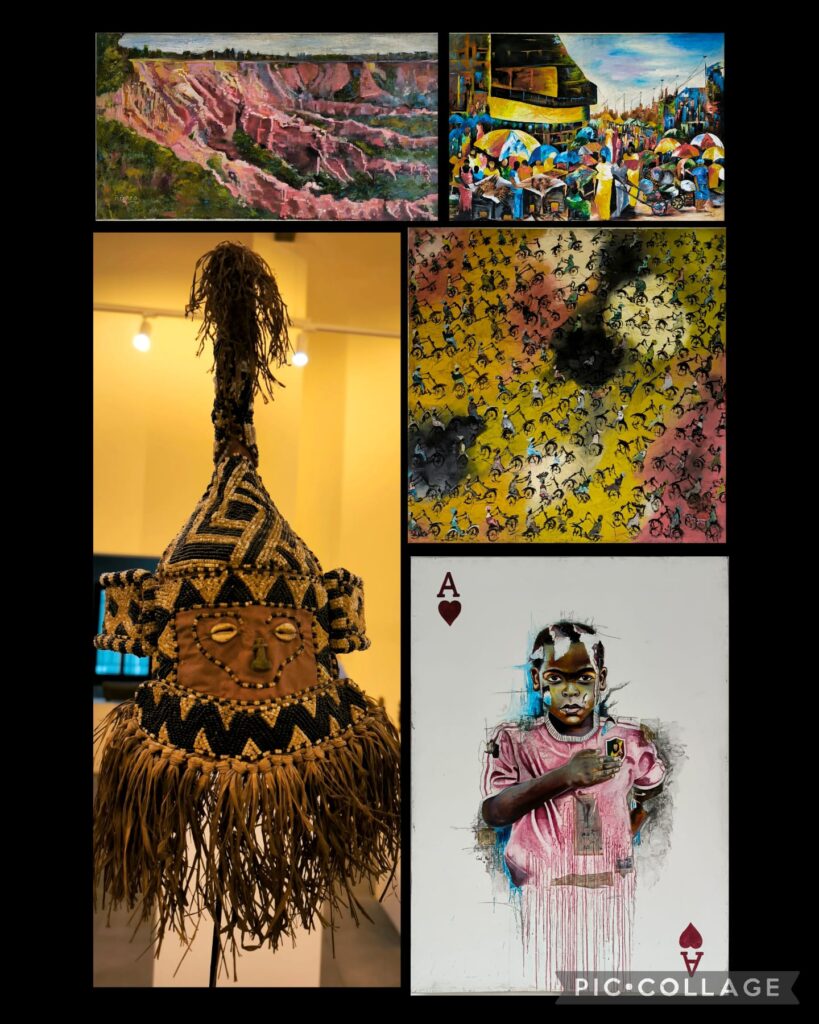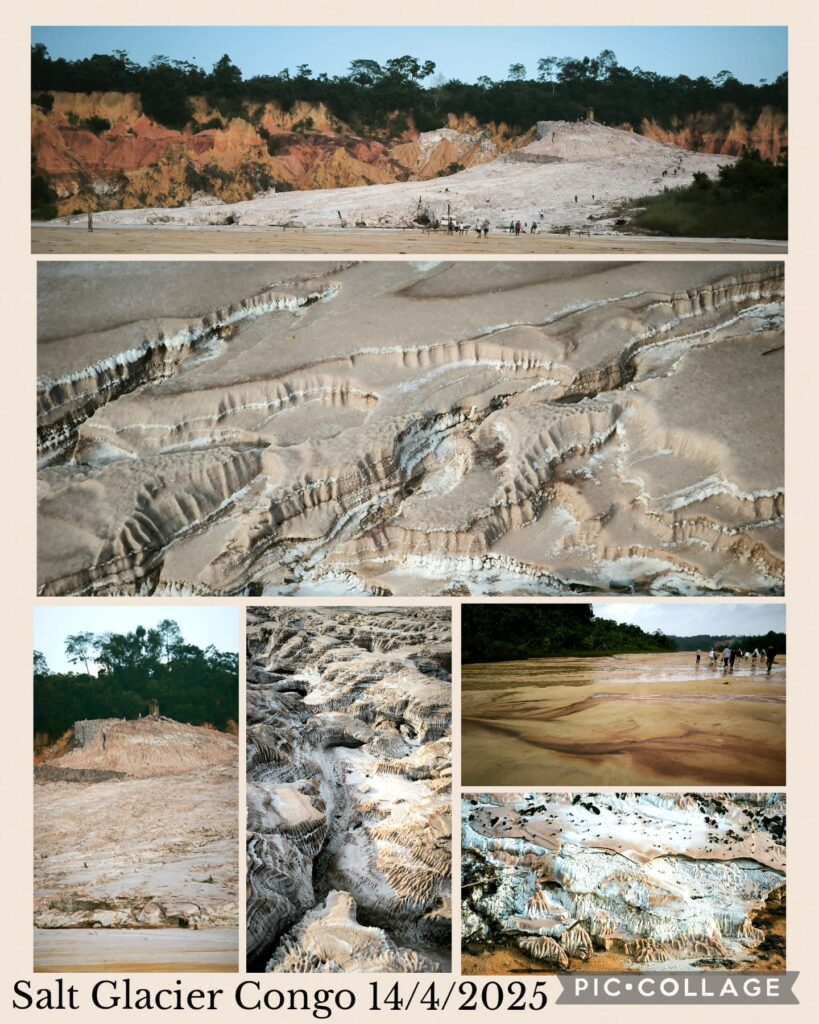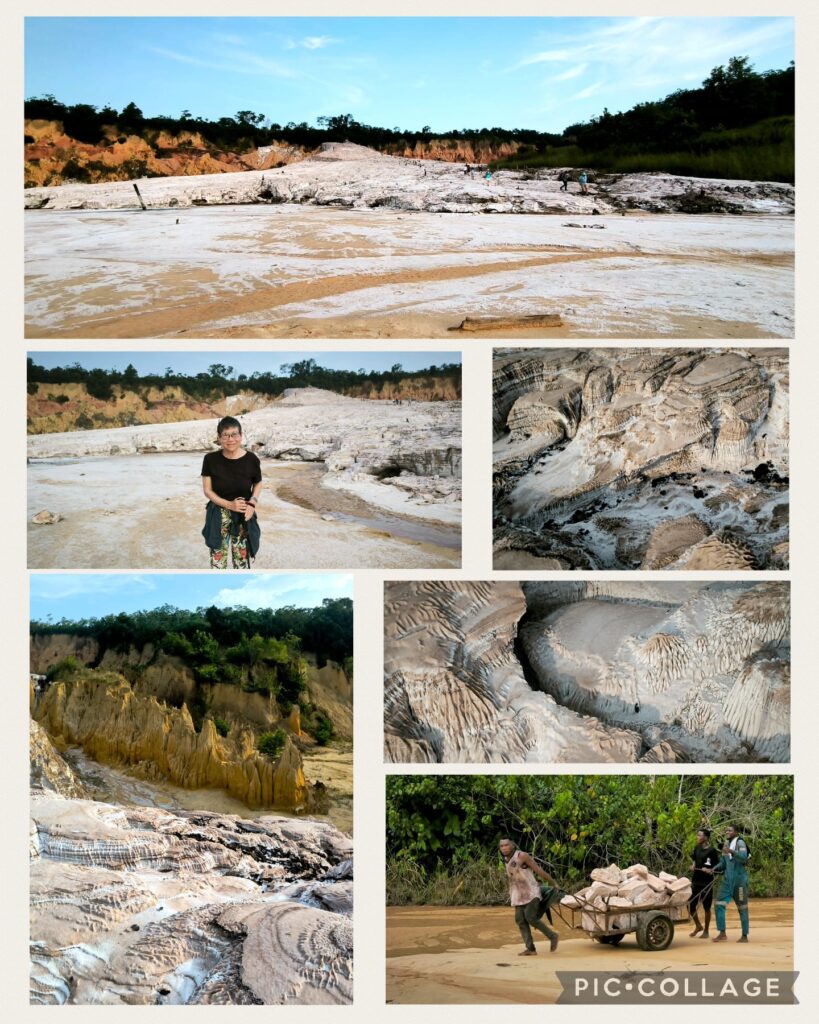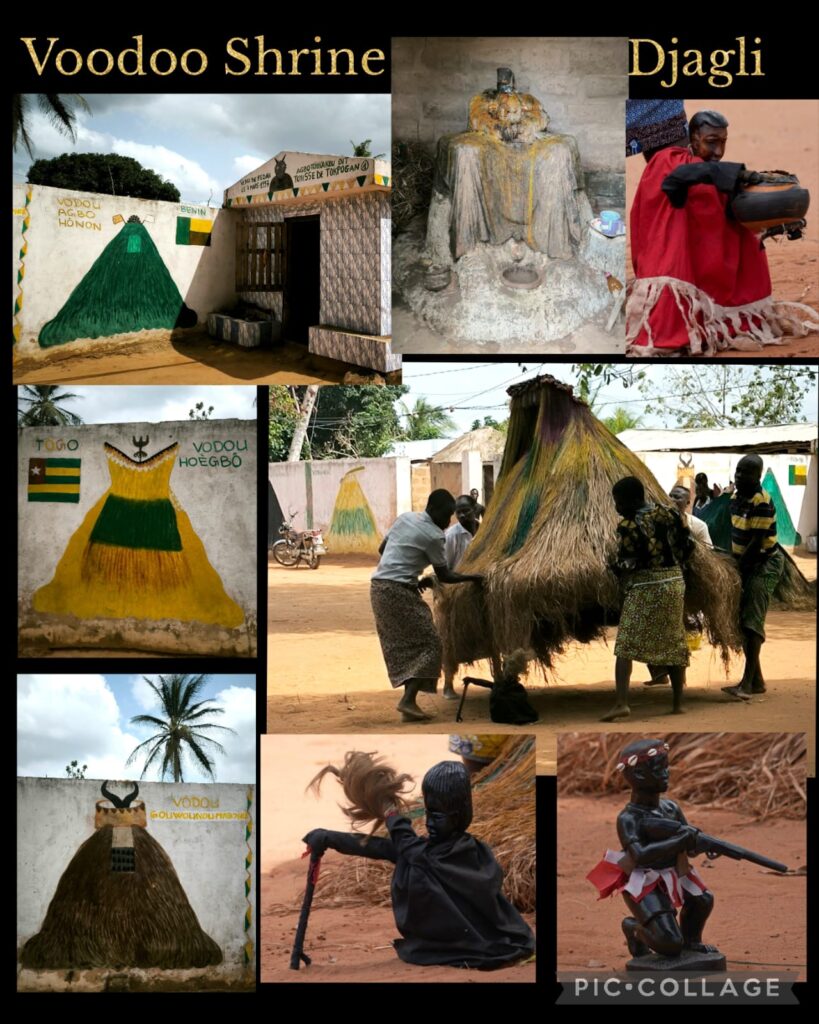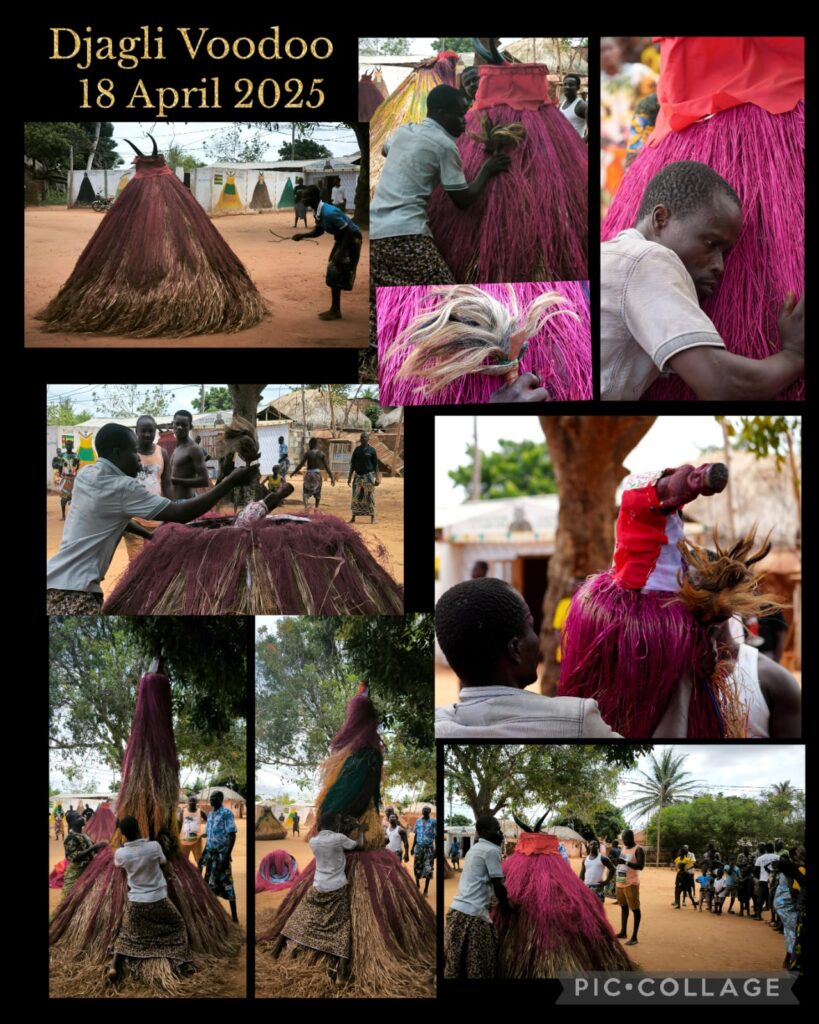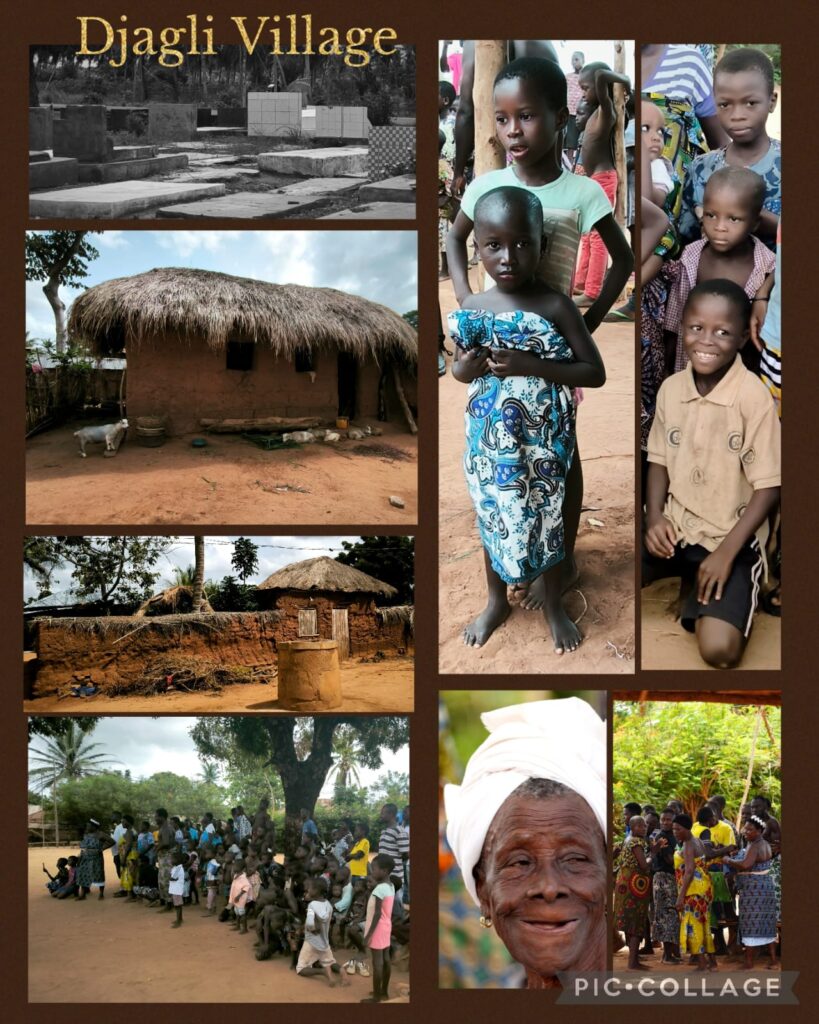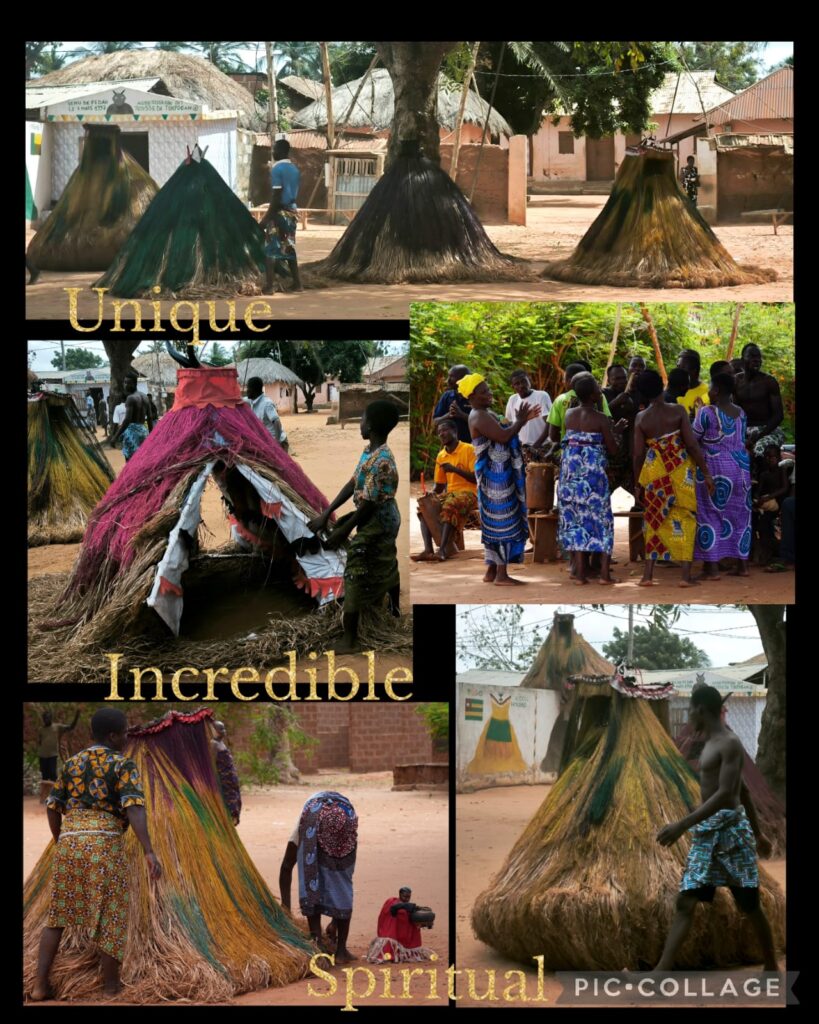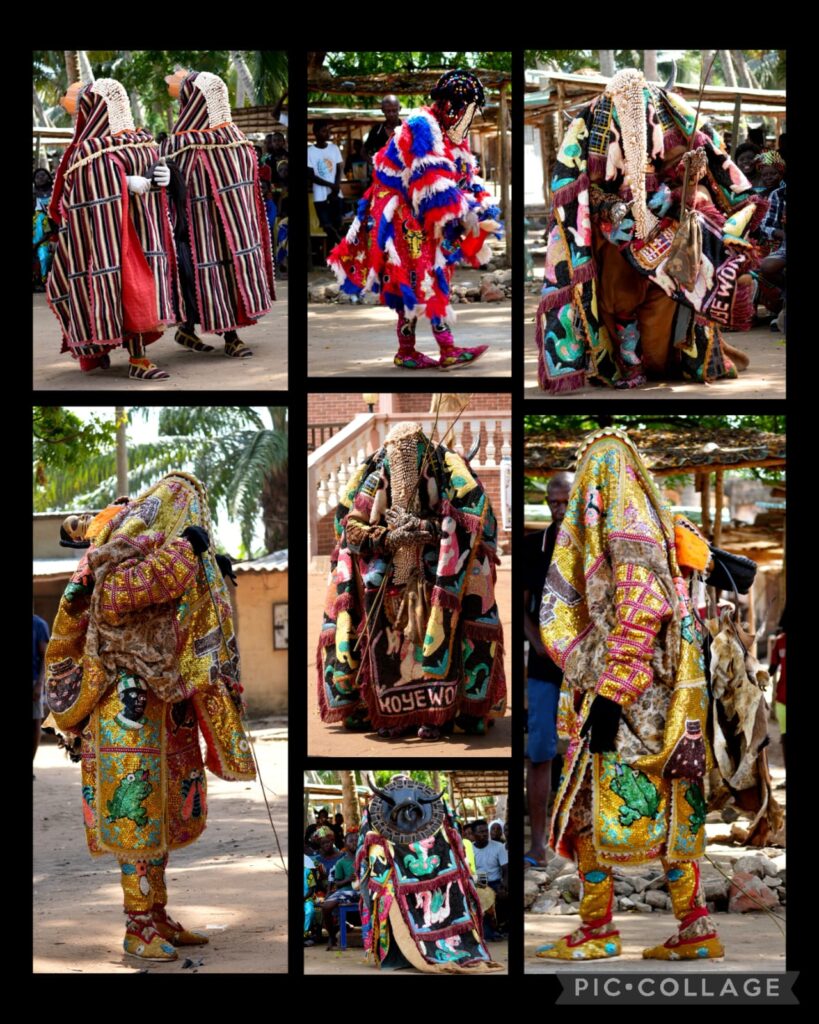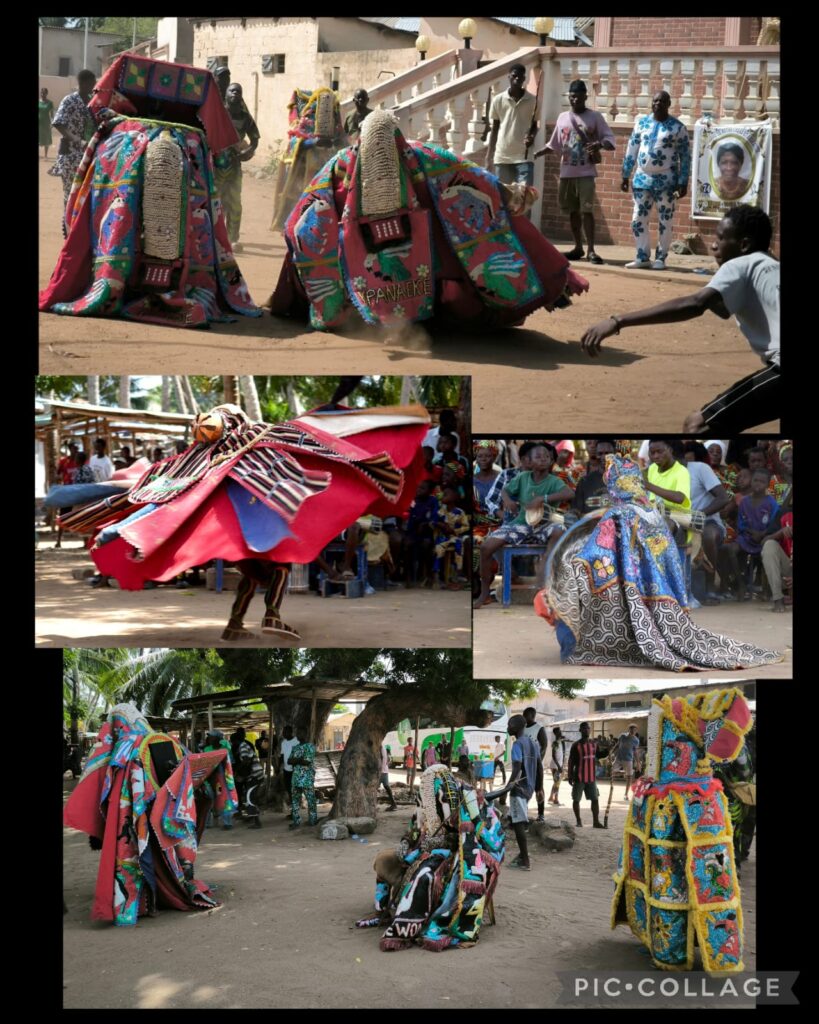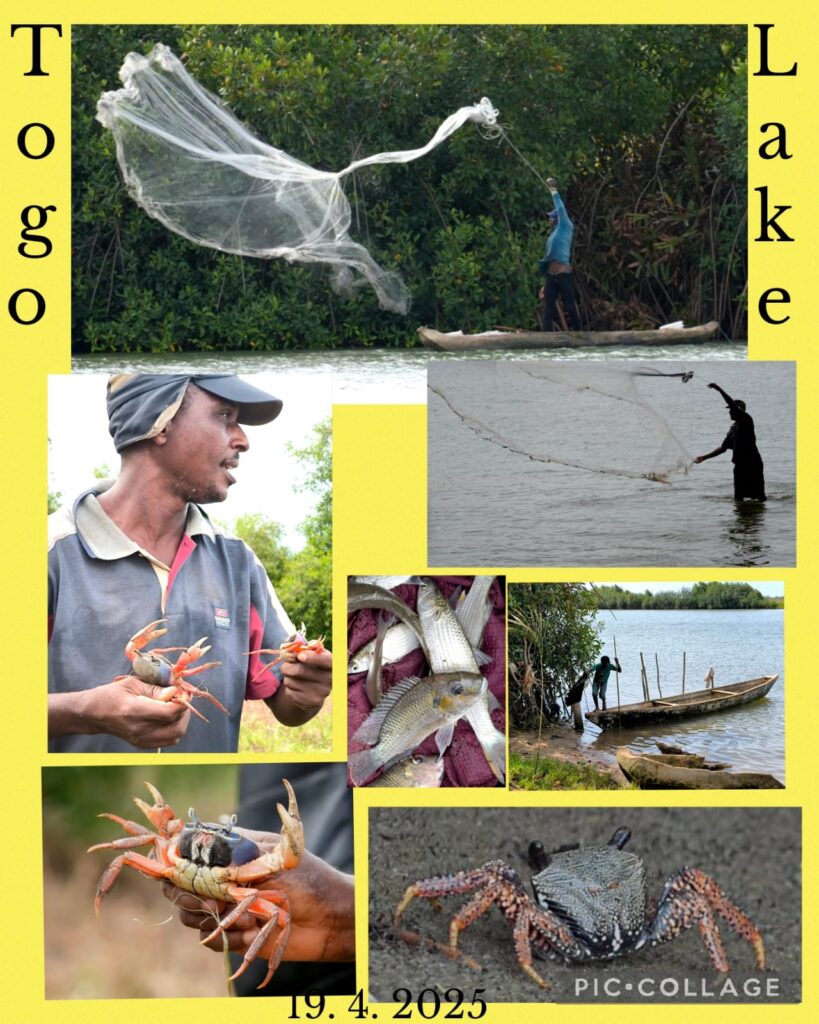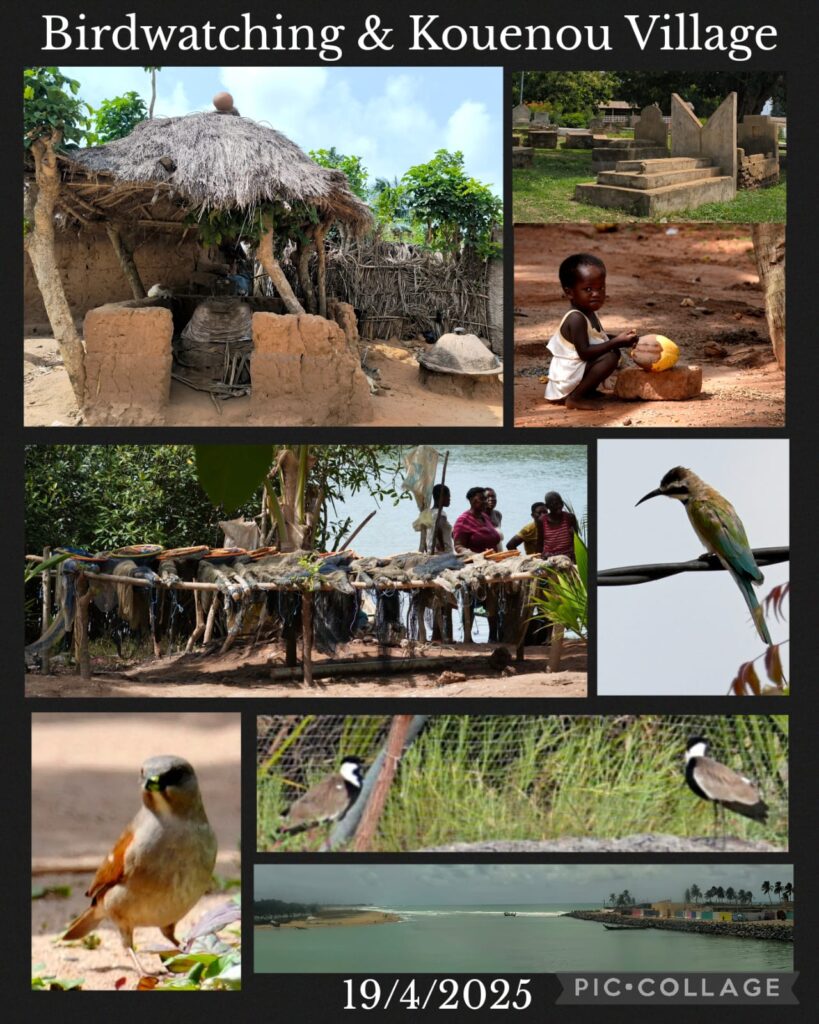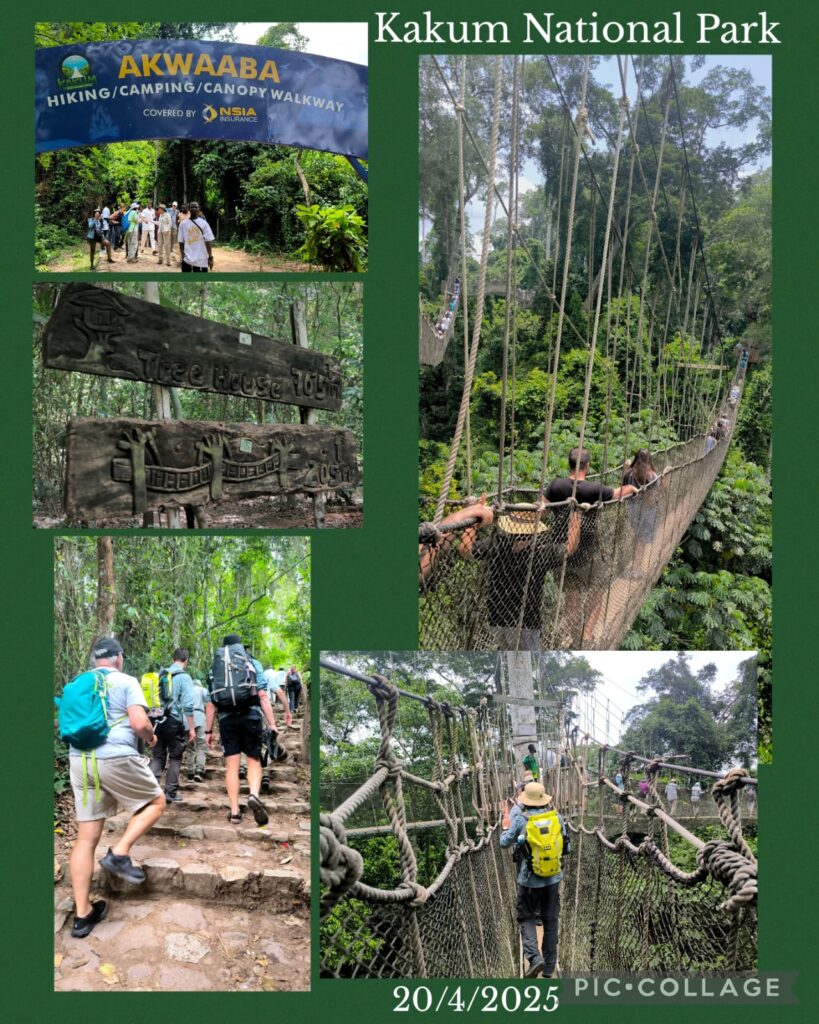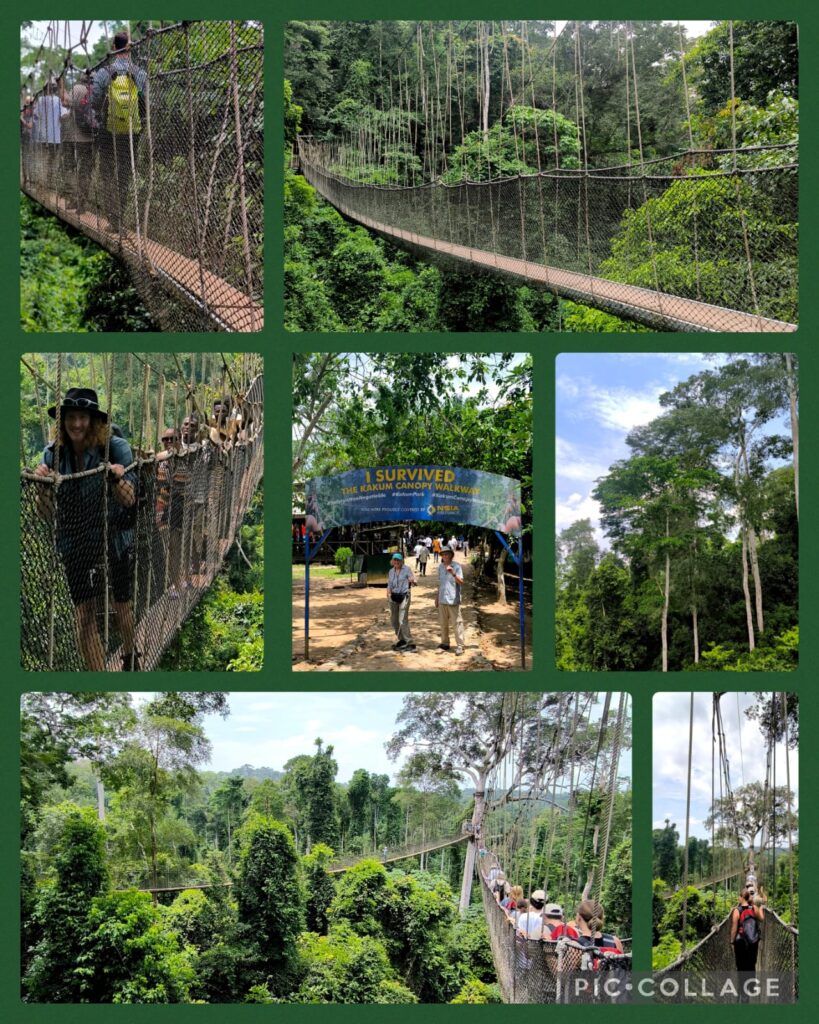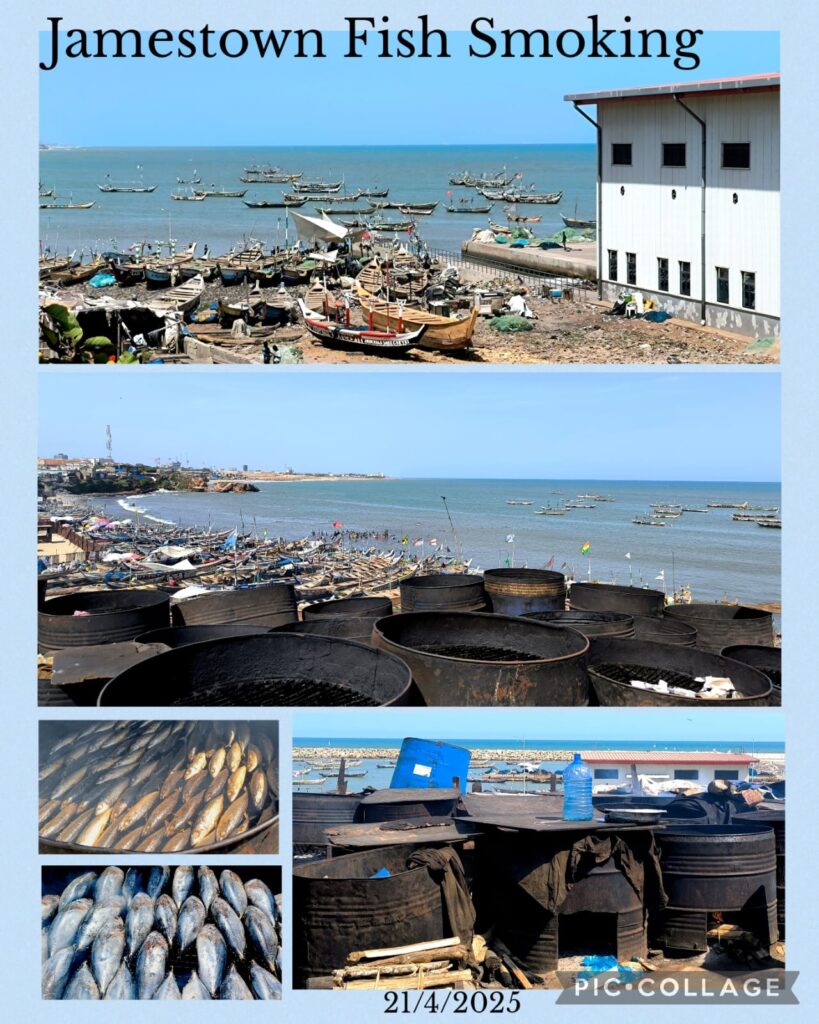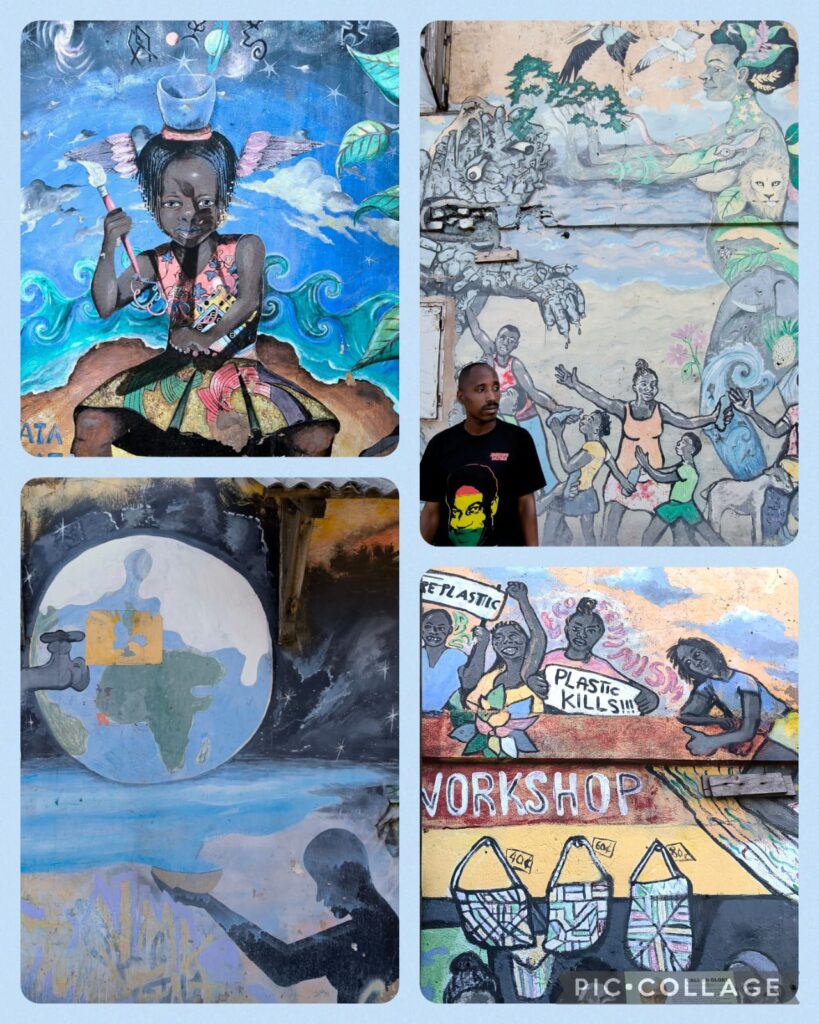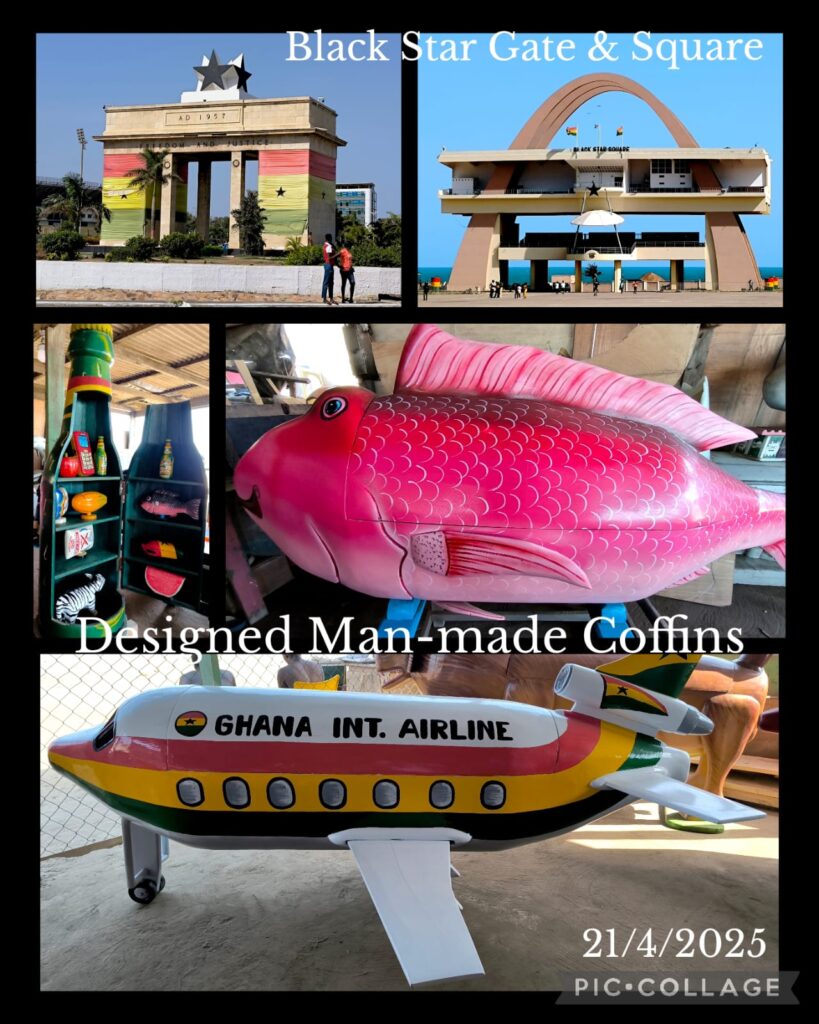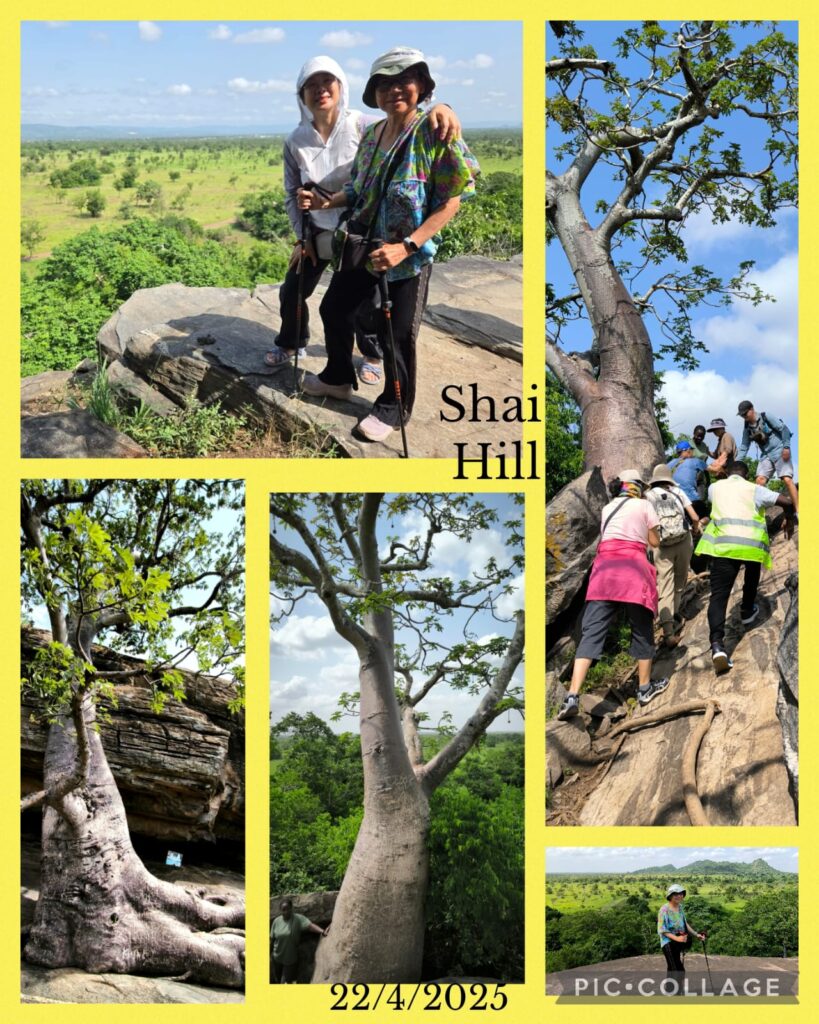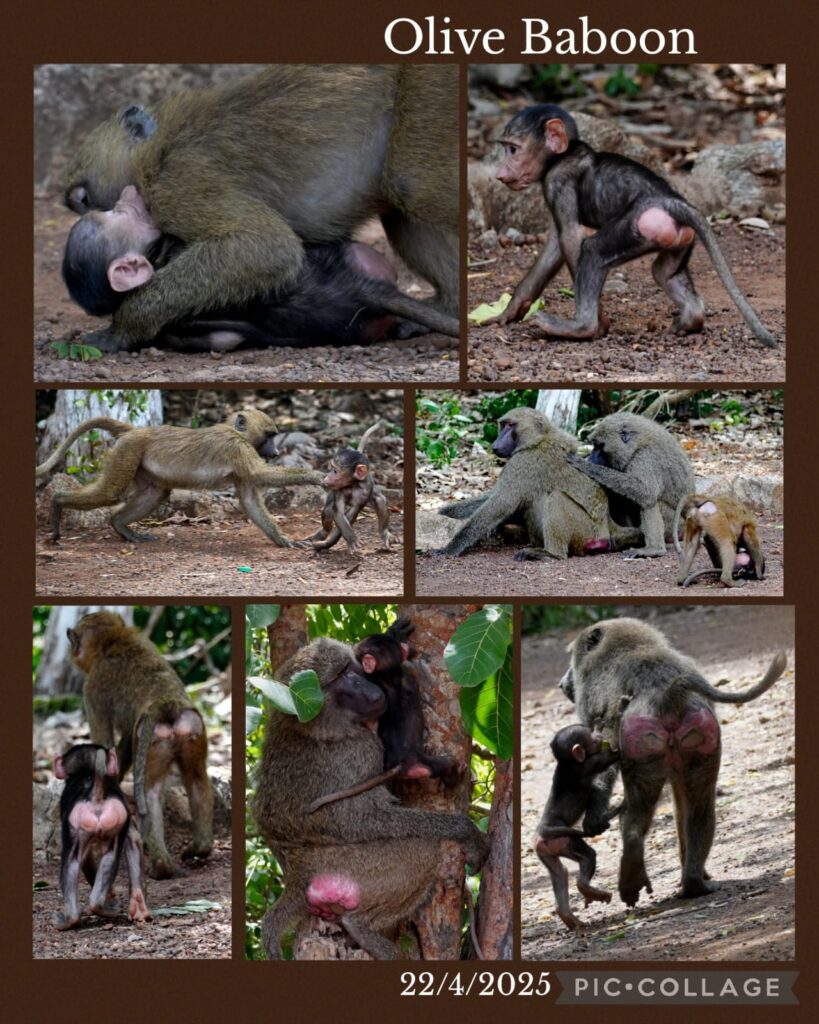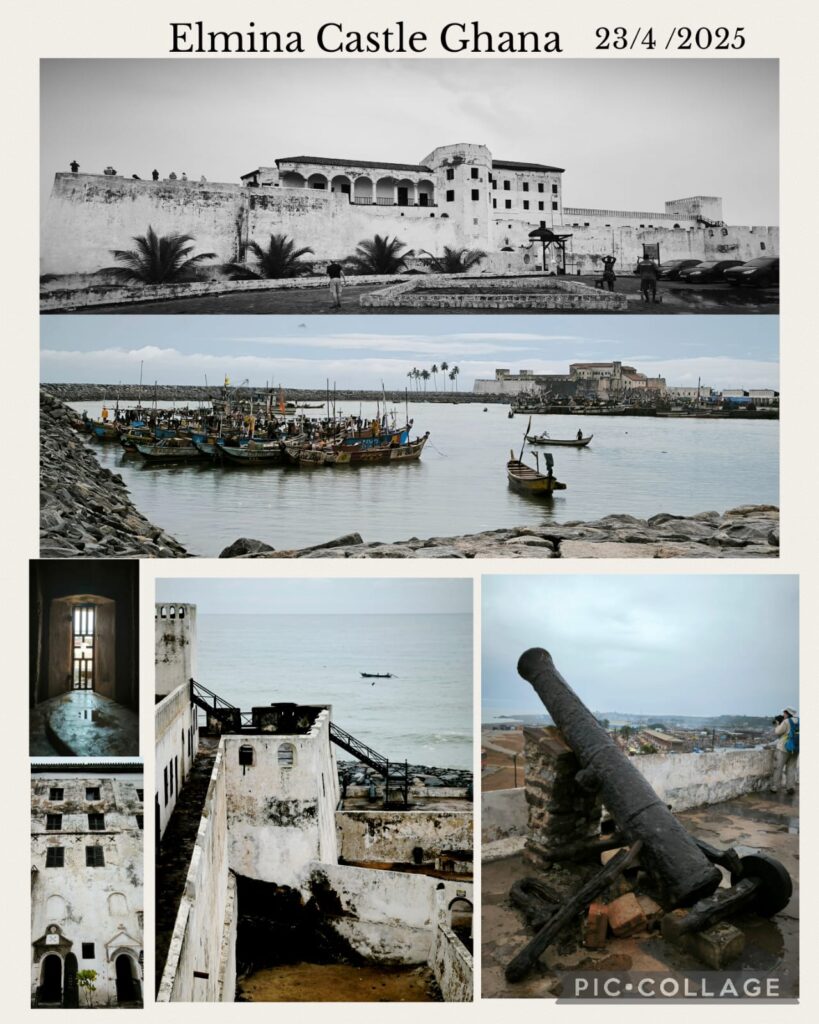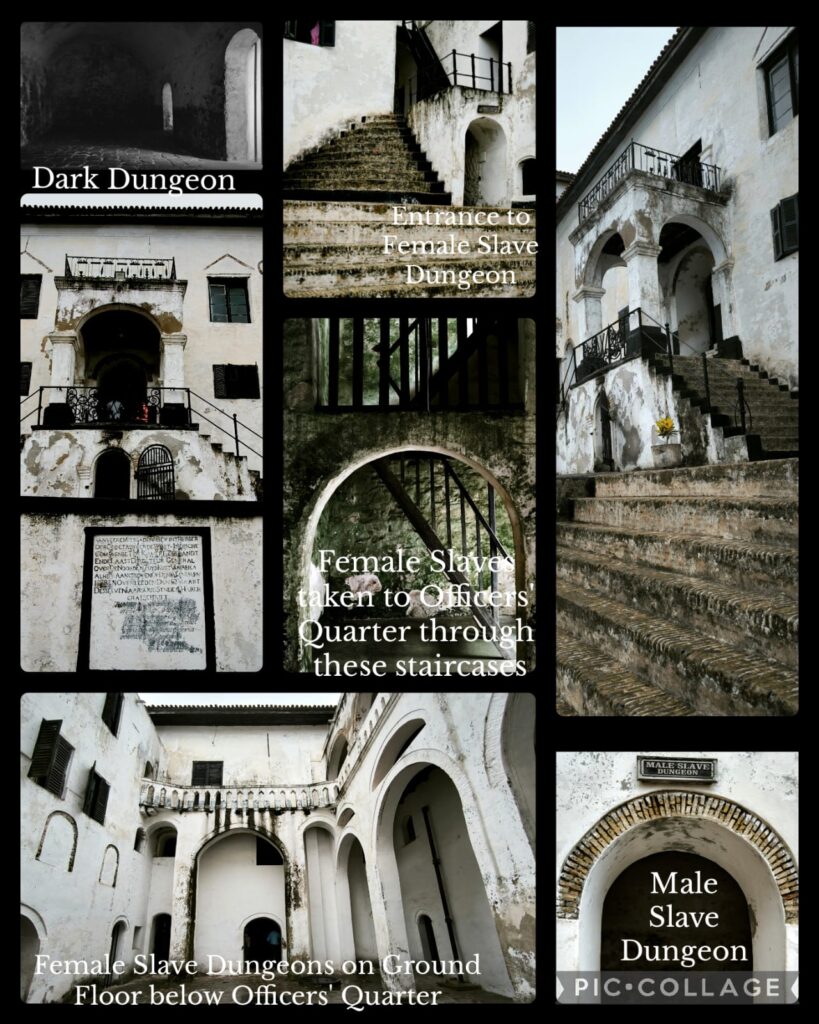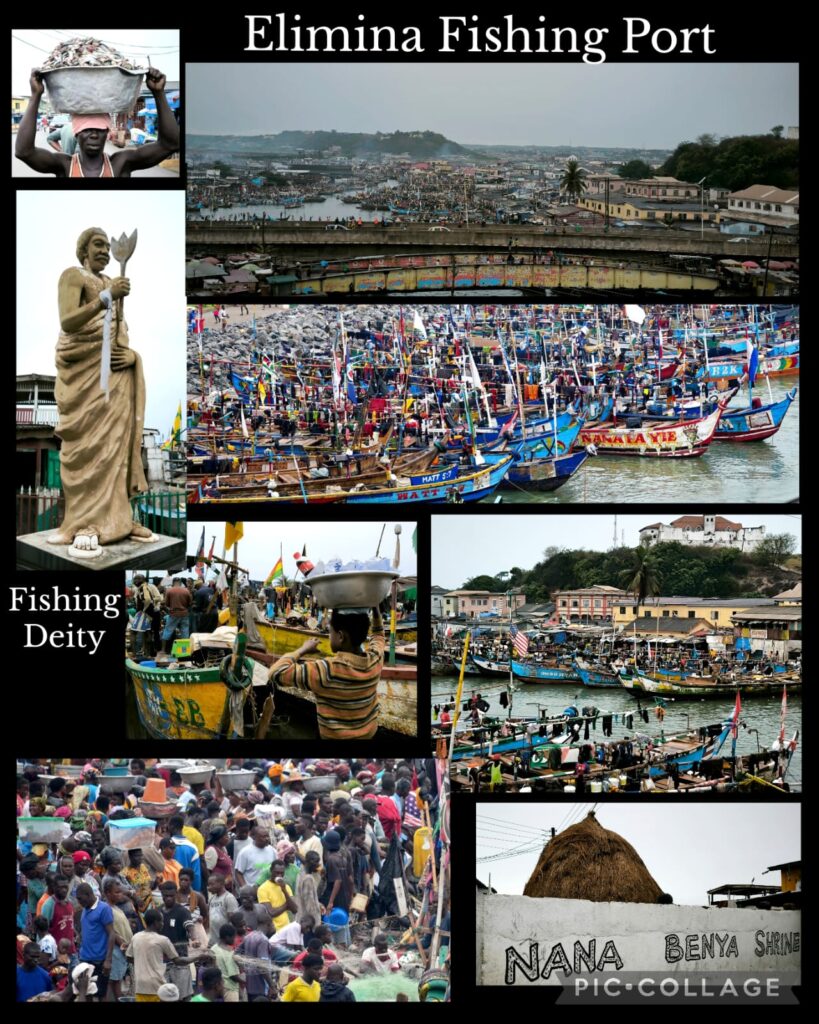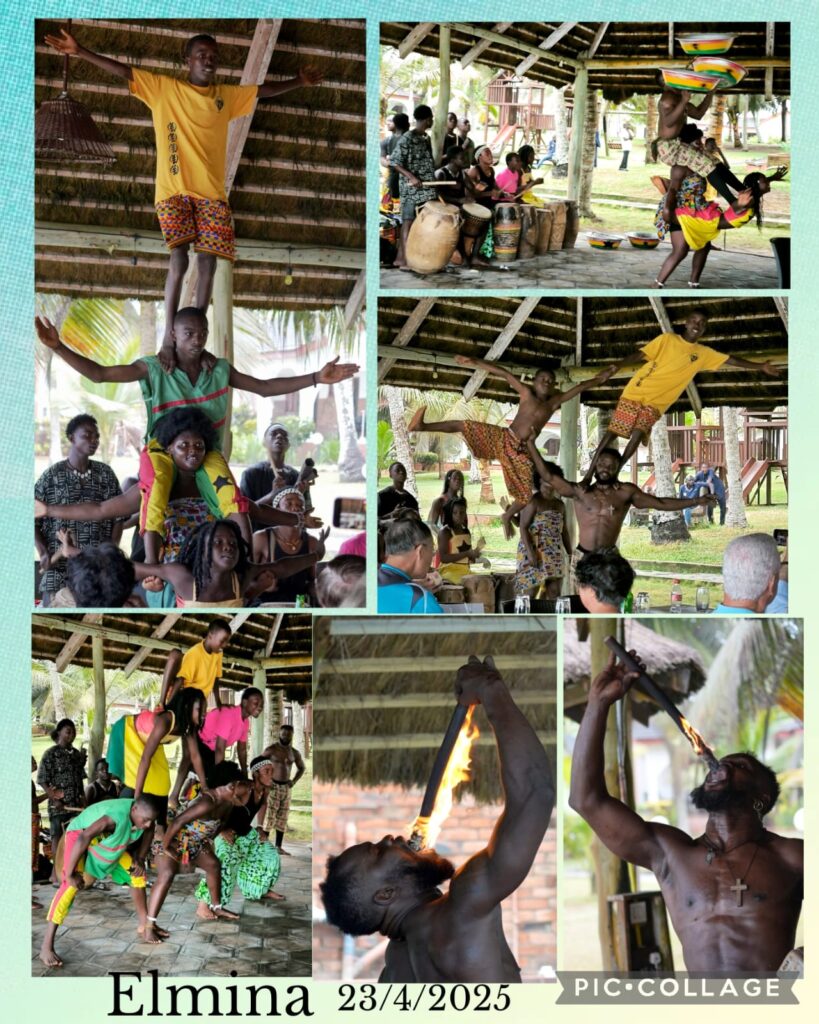Day 11 April 13 At Sea Lecture Day
Of the three lecture on “Venom”, “Marine Megafauna of West Africa” and “China-Luisphone Africa Relations”, I enjoyed the last one by Clifford most. Clifford whose ancestors came from Goa and who was born in Kenya before migrated to the UK, is now teaching at the Centre of African Studies at the University of Hong Kong. Given his background and research, he has insights into and personal experience of colonialism in Africa.
The Republic of the Congo (Congo) was established in 1958 and gained independence from France in 1960. The area was dominated by Bantu-speaking tribes at least 3,000 years ago. The territory dominated by a confederation led by Vungu from the 13th century, was colonized by France in the late 19th century and was incorporated into the French Equatorial Africa in 1910. Political turbulence followed and eventually led to civil war from 5 June 1997 to 29 December 1999. Congo has an area of 342,000 sq km and a population of 6,142,180 (2023 census). Brazzaville is the capital while Pointe-Noire is the second largest city and the main commercial centre and the port. The oil sector which dominates the country’s economy, accounts for 65% of the GDP, 85% of government revenue and 92% of exports. The GDP per capita was USD2,857 (2023 estimate)
Day 12 April 14 Pointe Noire, Congo
We docked around 7 am and had a busy day. In the morning, Elaine and I joined a 3-hour city tour to explore Pointe-Noire located at a headland between Pointe-Noire Bay and the Atlantic Ocean. First discovered by Portuguese navigators in 1484, Pointe-Noire prospered during the French rule. A railroad was built to connect Brazzaville on the Congo River and the Ubangui River with the Atlantic coast and Pointe – Noire was chosen as the terminus of the Congo-Ocean Railway (512 km in length) which was opened in 1934. Our first stop was the dilapidated train terminus not far from the port. Apparently freight service is still running despite the poor state of the track.
Our next stop was a small art and craft market opposite the terminal. We then stopped at the cathedral before heading to the African Circle Museum at the Lumumba roundabout which marked the boundary where Congolese natives despite acquiring French nationality, were forbidden to cross into the exclusive enclave of French elites. The museum has an impressive collection of sculptures and artifacts. Outside the main building, I saw paintings of contemporary artists. We also watched a cultural performance in the courtyard for almost half an hour. At our request, we were taken and walked in a local market for some 15 minutes before heading back to the boat for lunch.
In the afternoon, I joined the Makola Salt Glacier Exploration tour. Elaine stayed behind as she found the heat exhausting. This site is located about an hour’s drive from Pointe-Noire. The traffic was bad and it took much longer to get to the site which was an old potassium salt mine that stopped operation in 1977 after a flood of the aquifers. We had to walk along a dry river bed with a light drizzle for over a kilometre to reach the base of the glacier: the flow that remained and solidified looks like a glacier on an arid and sandy river bed. It looks surreal and unique with a pink hue owing to the iron and mineral salts present. Some guests climbed to the top for a panoramic view. Given my walking and hip problem, I was content to stay at the bottom and sit in silence to enjoy the magnificent and eerie scenery. I was back on the boat for dinner.
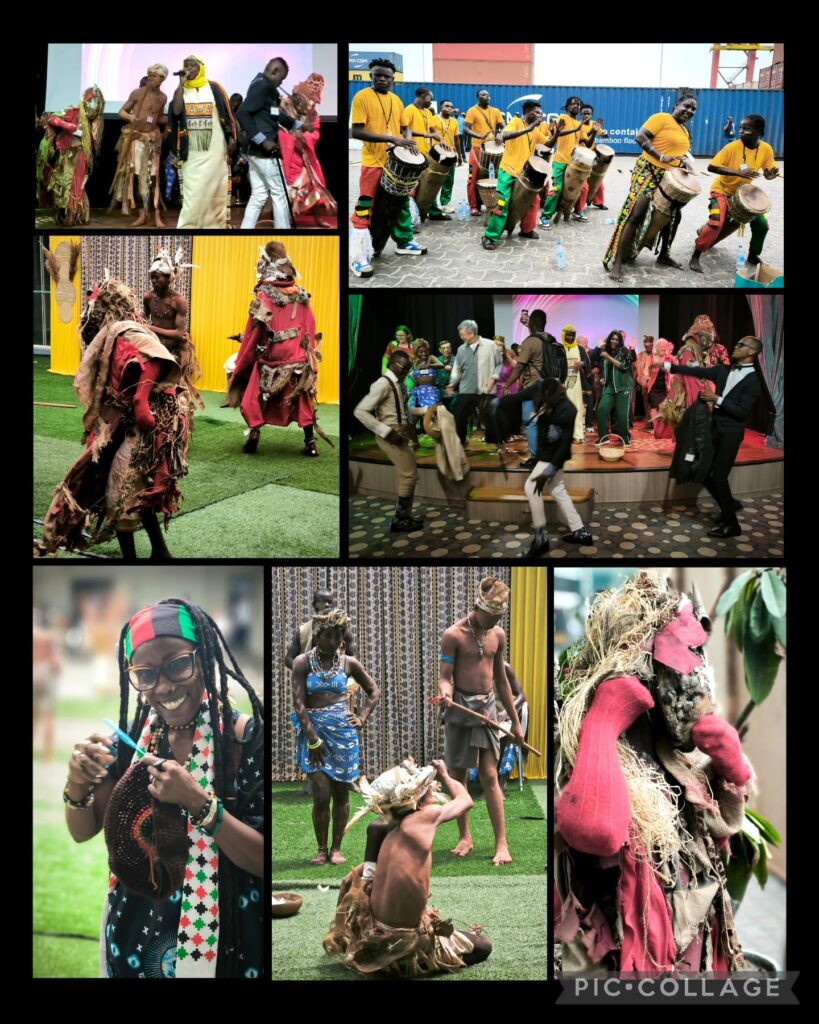
At 9pm, we enjoyed another cultural dance performance in the show lounge. It was with the same group of performers at the museum with more elaborate costume and music. As we all had a long day, many guests began to leave before the end of the performance which ended at 10 pm.
Day 13 April 15 At Sea Lecture Day
I remained energetic and attended four lectures: “Africa’s Culinary Legacy”, “Connecting with Wildness”, “Principles of Rarity and Extinction” and “Desert to Jungle: African Bird Diversity”. The one on culinary legacy was most interesting.
Day 14 April 16 At Sea – Crossing the Equator
The original itinerary included a day at Bom Bom Island Sao Tome. I had been looking forward to this stop. Unfortunately, the visit was canceled owing to security risk. Privacy in this area has been a problem. But what could we do? As we were crossing the Equator, we were invited to attend the traditional “Crossing the Line” ceremony by the pool at 4 pm. The weather was not cooperating: it was windy and drizzling. Anyway, we gathered to welcome King Neptune aboard to bless “pollywogs” (or “tadpoles”), the first- time equator travelers. As I am already a “shellback” (a person who has crossed the equator and been initiated in the traditional ceremony), I stood back to enjoy the performance. Both the guests and the expedition team had fun!
Day 15 April 17 At Sea Lecture Day
I spent my time leisurely at three lectures: “Connecting with Others” by Roddy, “Introduction to Togo” by Alexandra, and “African Religions Across the Atlantic World” by Clifford. All three speakers were wonderful and the lectures educational.
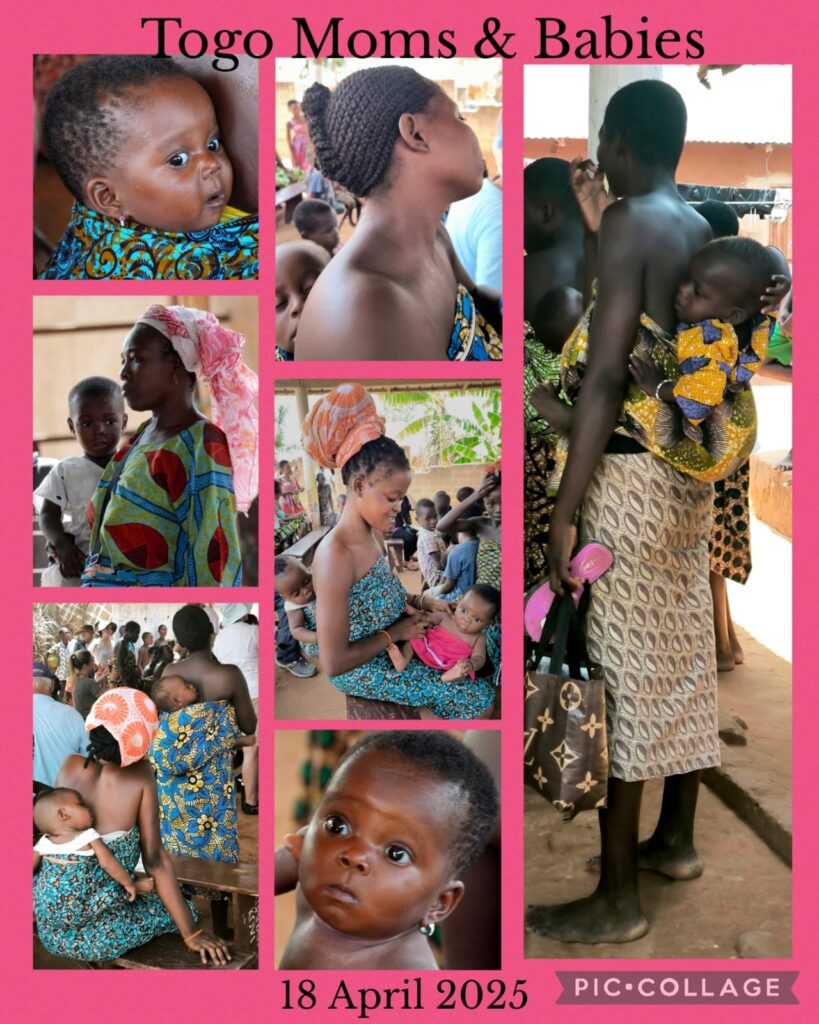
Day 16 -17 Togo
I was in Togo for five days (31/1-4/2/2012) and fell in love with this small but beautiful country with five million people and an area of 57,000 sq km. Togo has rich cultural heritage. Home to a diverse mix of some 40 ethnic groups, it is described as the birthplace of the voodoo religion with many extraordinary ceremonies and rites and home to many animist cults. Voodoo can be seen as a form of spiritual healing.
April 18 Lome
Lome, capital of Logo, is located along the Gulf of Guinea. We joined a 8-hour “All about Voodoo: Togo Cultural Experience” with four stops. I first watched a voodoo ceremony in Benin in 2012 when I learned that temple voodoo guardians and veneration is made to an idol which has a clear form such as a statue. We first stopped at Djagli (Ewe aka Gen people), a small village where we watched the Zangbeto spirit. We watched more than half a dozen spirits in straw dress swirling madly around. Inside the enormous dress we saw nothing but a tiny idol. Where was the force that propelled it to swirl around and performed all sorts of amazing acts. One of the spirits even climbed and jumped from a wall. Mystical and incredible!
The second stop was at Gayito Kondji. This village is much bigger but less tidy than Djagli. There were no spirit as in the first village. But many villagers men and women took part and several appeared to be in trance. The place was small, hot and crowded. Villagers joined in and cheered on. A very different atmosphere!
The third stop was at Aneho (former colonial capital of Togo until 1920). The spirit this time were all dressed up with colourful costume. The spirits represent those of the royal families.
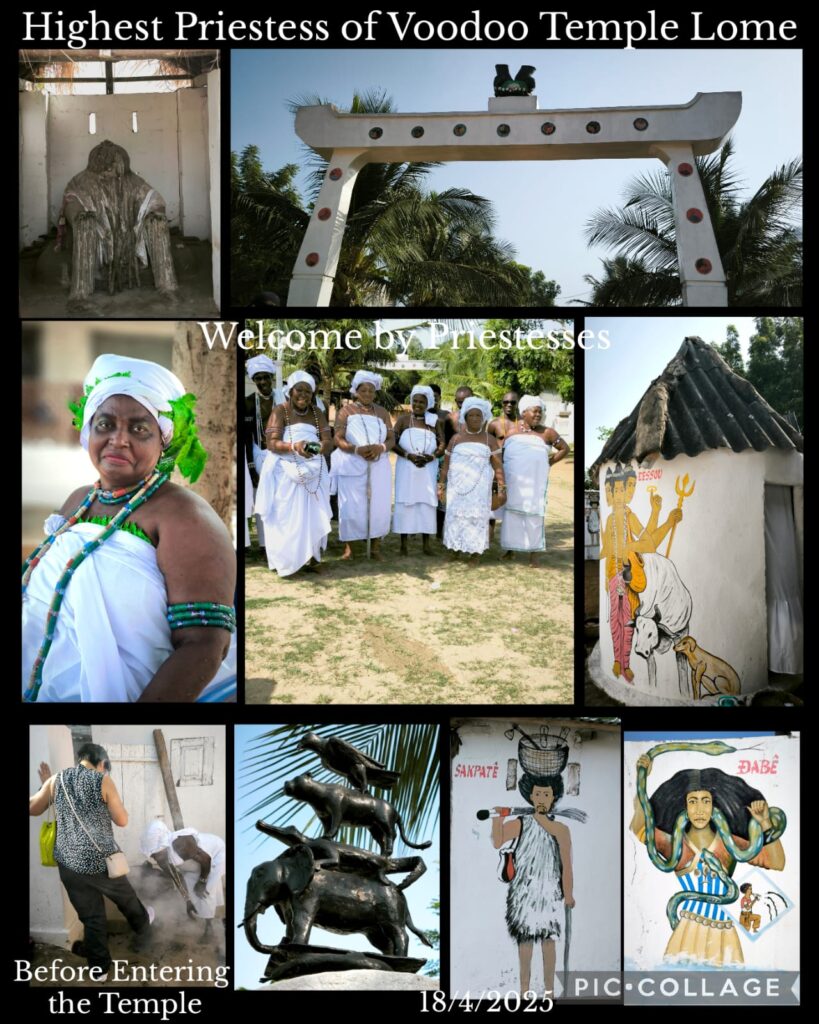
Finally we visited a spiritual centre for the Voodoo religion with one of the most powerful voodoo priestesses not far from the Togoville Catholic Cathedral (built in 1910). In the temple, we met a group of priestesses dressed in white and learned that each year thousands of worshipers all over the world would arrive in her presence asking for her blessing in exchange for a sacrifice to the deities. (It is a pity I did not have time to visit the famous Akodessewa, the largest fetish market in Western Africa that sells objects and raw materials used in voodoo rituals in Lome).
Elaine and I decided to take the free shuttle to a nearby beach. At the end, we ended up having a ride for 6km to the Grand Market before spending over half an hour in the beach resort right next to a container yard and the port. We enjoyed a nice quiet break before returning to the boat for a nice dinner at 7pm.
Day 17 April 19 Lome Togo
I had an early start before 6:30 am as I joined a birding tour around Lake Togo. (Elaine preferred to sleep in). We had a leisure stroll along the lake stopping every now and then to watch birds. While the experts saw the black kite, buzzard, dove, cuckoo, lapwing, weaver, plantain eater, pied kingfisher, swift, swallow, egret, heron, bee-eater, sun bird, pied crow, starling, sparrow, weavers, bulbul and hornbill etc, I was content with seeing only a dozen species! We also watched a fisherman catching fish with a net: he got eight small fish. Another fisherman showed us a couple of local crabs. We ended the 2-hour walk in Kouenou Village.
We set sail for Ghana at 3:30 pm. On the way, we had a Captain’s Farewell and Crew Parade at the show lounge at 6:30pm. The Captain and crew had indeed done a fantastic job.
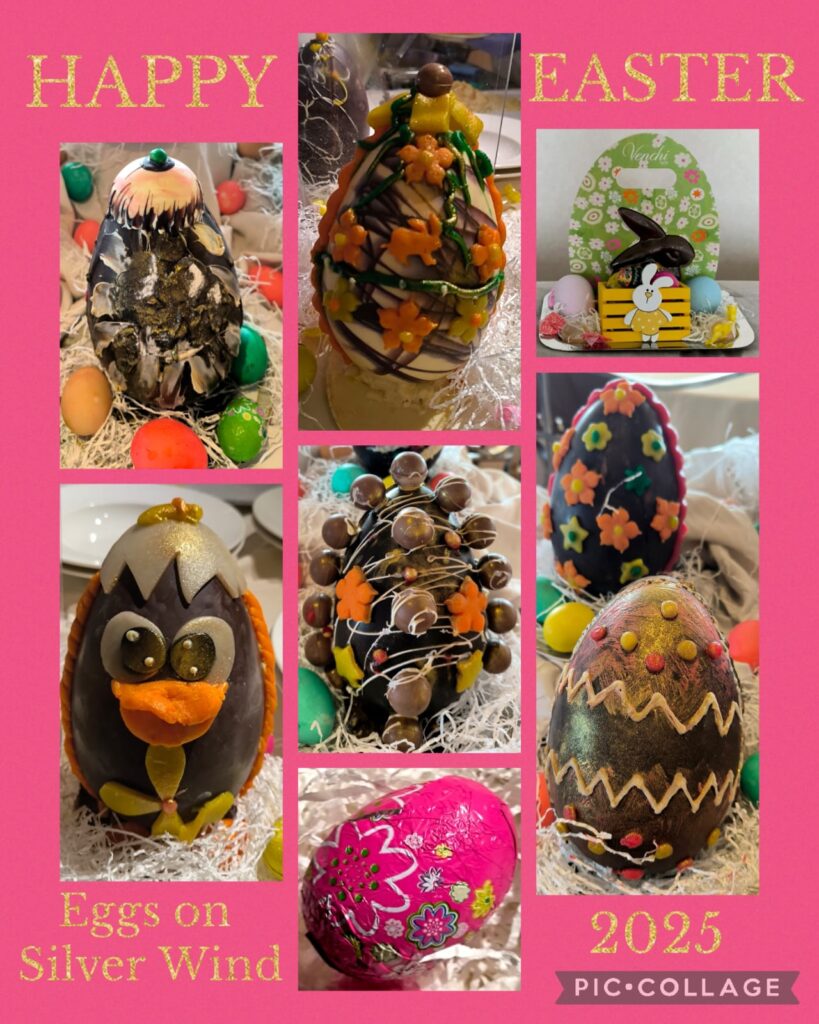
Day 18 April 20 (Easter Sunday) Takoradi Ghana
Takoradi is the gateway to the Elmina Castle, Cape Coast and Kakum National Park. After clearing customs and immigration, passengers set off in four different tours. I joined a full-day “Explore Kakum National Park” (Elaine did not feel well and skipped the tour). The 2-hour journey (about 107 km in distance), turned into almost 3-hour drive owing to the poor road conditions. The park covered with tropical forest has an area of 375 sq km.We spent about an hour and a half taking a 350m-long canopy walk involving 7 suspension walkways. In the park, there are a few endangered species of fauna namely Diana monkey, giant bongo antelope, yellow-backed duiker and African elephant. It is also an important bird area. Unfortunately, as it was Easter Sunday, the park was full of excited energetic young people who made so much noises that scared animal and bird away. It was a humid and hot day and some of us did not want to take another walk after lunch in the park. The expedition team kindly arranged a bus to take us back to the boat. I was back on board around 5pm and we set sail for Accra at 8pm.
Day 19 – 20 Accra Ghana
Silver Wind docked at Tema, a busy port and industrial area next to Accra the modern capital of Ghana. I explored Accra on my own in 2012 and spent a day roaming in the vibrant Makola Market and Jamestown. This time I picked two tours on offer from the ship hoping to see something different.
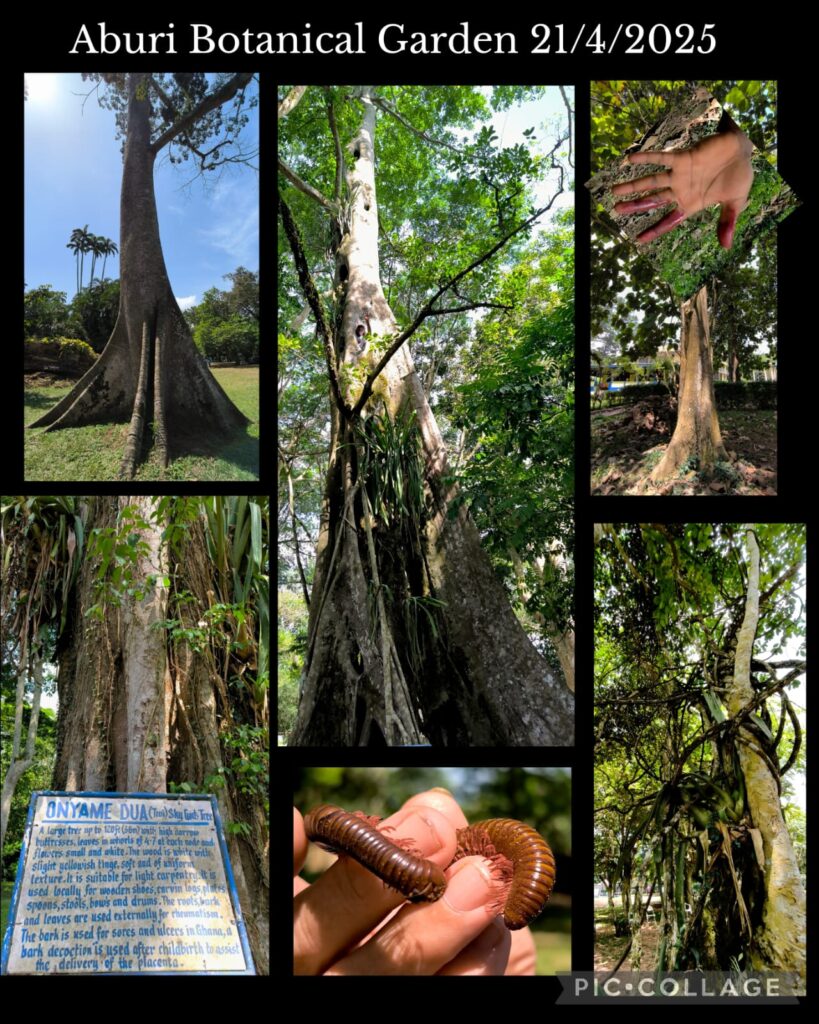
April 21. Elaine and I joined a “Nature & Culture in Aburi & Accra”. We first drove uphill to reach the Botanical Garden in Aburi. As it was a public holiday, locals arrived in droves with loud music. I wish people could respect silence especially in nature. Our local guide tried his best to show us various native plants (strangler fig tree, Sky God’s Tree, Silk Cotton Tree, cocoa, teak etc) while Mel and birdwatchers were busy looking for birds including the hornbill.
After a nice lunch at Accra City Hotel, we drove to Jamestown. I notice Accra has changed a lot since my last visit with many high-rise modern buildings and new hotels in the commercial area. But conditions in Jamestown which replaced Cape Coast as the capital of Gold Coast in 1876, seem worsened. As it was a public holiday, the place was deserted. We had a guided walk with explanations on the traditional method to preserve fish i.e. smoked fish using fire wood or “deep fire fish”. It was smelly and the hygiene and sanitary conditions were horrible. From a vantage point I could see the lighthouse, filthy beach of Jametown and Usshertown, and the fishing fleets.
We stopped briefly at the Black Star Square and Black Star Gate, symbols of Ghana’s independence in 1957 and unity. Our tour ended with an interesting visit to a coffin maker. As the first leg would end on April 22 with half of the passengers leaving, we had a hearty farewell gathering with a final recap of the voyage with expedition leader Lea and her full team.
April 22. Today was the end of the first leg of the 40-day journey and over 100 guests disembarked. While joining passengers were boarding, continuing passengers could join day tours. Elaine and I went on a full-day “Shai Hills & Krobo Glass Beads” (9.5 hours). The drive to Shai Hills was pleasant without traffic jam. The Shai Hills Game Reserve, first established in 1962 with an area of 51 sq km, was home to the Shai people before they were rejected by the British in 1892. Covered with grassland and low dry forest vegetation, it has five separate hills. We had a surprisingly short but pleasant walk to one of the hill tops with excellent panoramic views of the reserve. We were alone and had time to enjoy and soak in the atmosphere. We saw plenty of antelopes and baboons.
After a nice lunch in a posh hotel with a golf course, we drove to Krobo to visit the workshop of a glass bead master. The road was in poor condition and the traffic was bad: it took an hour to get there. We watched the master talking for about fifteen minutes about how beads were made (We watched a video on the ship the night before) and spent half an hour in the shop. Given the travel time and brevity of the talk, I could have given this visit a miss. I would rather have gone back to the boat after lunch. At 5 pm, we attended a session to greet 100+ joining passengers when expedition leader Lea gave an overview of the voyage from Accra to Lisbon. I met many familiar faces from APEX including Jonathan and Ingrid. The boat set sail at 7pm.
Day 21 April 23 Takoradi Ghana
Today, Elaine and I took a full day tour (9 hours) to visit two world heritage properties at Elmina and Cape Coast. These castles together with some 40 castles in Ghana are reminder of the unforgettable history of the Atlantic slavery trade. Erected by the Portuguese in 1482, Elmina Castle was taken by the Dutch in 1637 and the British in 1872. The present day Cape Coast Castle began as a Portuguese trading post in 1555 before being constructed as a timber fort by Swedish traders in 1653 and fell to the Dutch hands in 1663. The British took over in 1664 following the Second Anglo-Dutch War and renamed it Cape Coast Castle. Cape Coast became the new capital of the English possessions on the Gold Coast.
It was raining heavily when we set off. Luckily by the time we arrived at the Elmina Castle, the rain had almost stopped. We followed a guided tour in both castles. I still had vivid memories of the cells where hundreds of male and female slaves were kept for weeks and months before being shipped off to the Americas. The harbour in Elmina was packed with colourful fishing boat of all sizes: in Ghana fishermen do not go out fishing on Tuesdays as a respect for the god of fishermen. There is a shine dedicated to this god in the fishing port. For me, the most interesting part of the tour was the 30-min walk to the bridge and through the market. We had a nice lunch with music and dance and fire-eating performances in a resort nearby.
After lunch, we had a short drive to Cape Coast and a guided tour of the castle. I was surprised how much I still remembered. I stepped outside the Gate of No Return and the sight of the beach and fishing boats outside were familiar.

